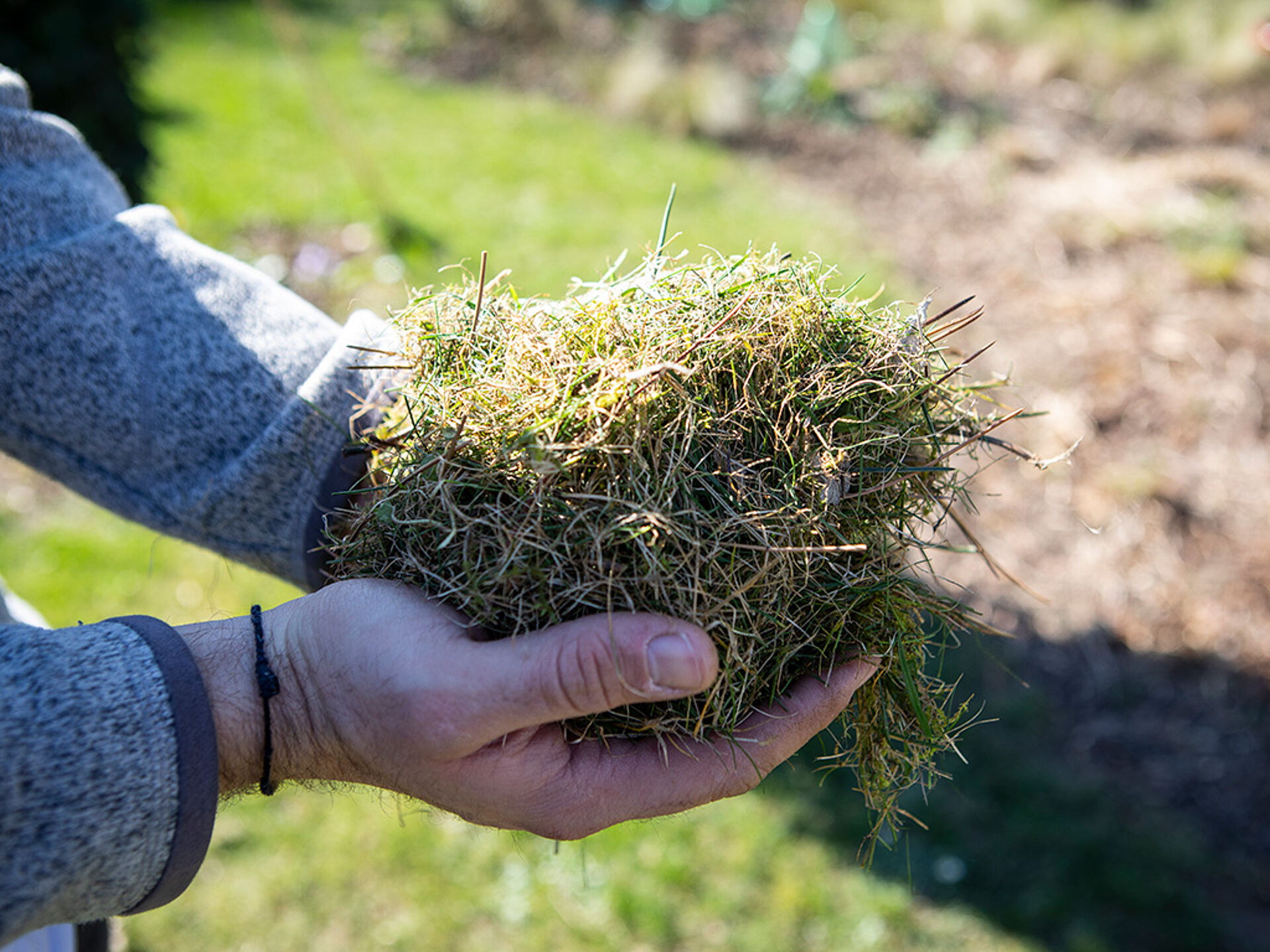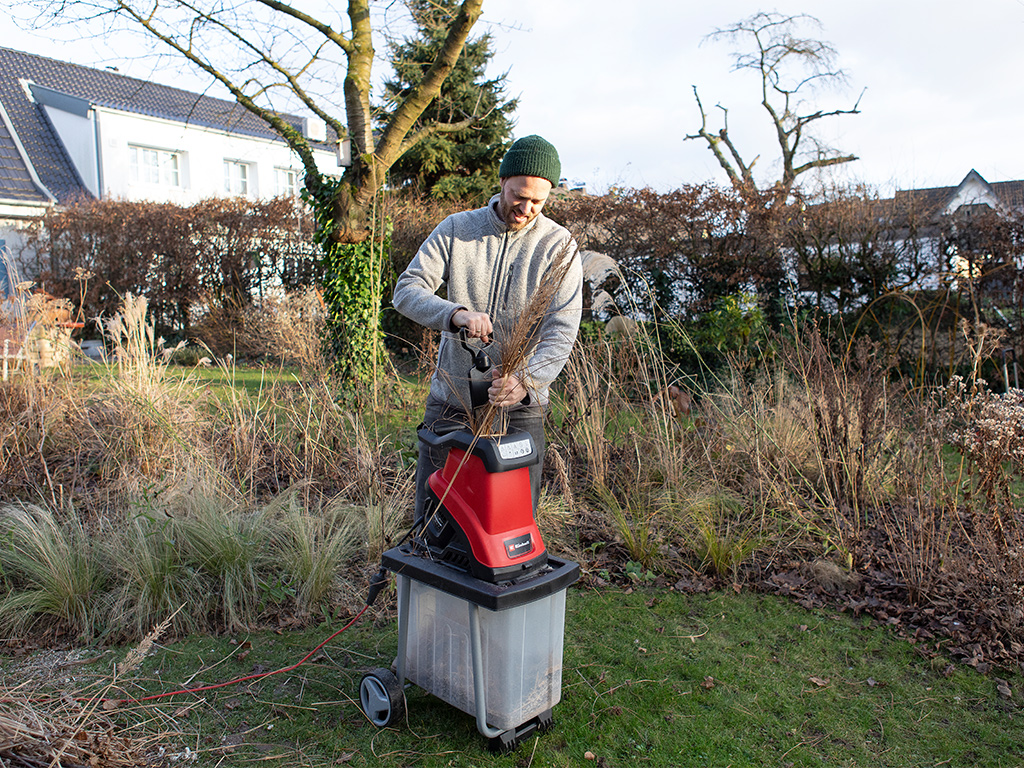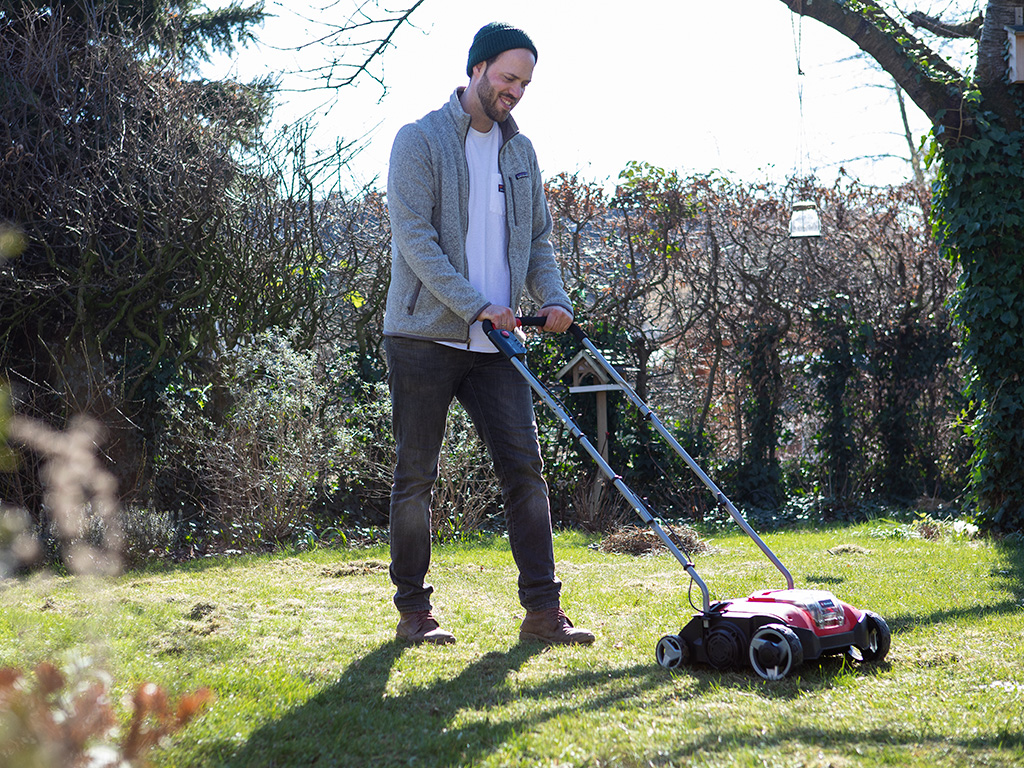How to get your garden ready for spring: 4 Top spring tips
It has been cold and miserable for a long time, the garden has been in hibernation and some of you may have been longing for the beginning of spring over the last few weeks and months. It's finally time to get started on the projects you came up with over winter! And time to get outside again!
When the time comes, the first early blossoms are peeking out of the ground and the trees are slowly turning green again, there is also the question as to what gardening work needs to be done now and how to prepare the garden for the coming season. That's why in this article we'll share four important things you need to do to get your garden ready for spring.

No. 1: Pruning perennials and grasses
Gone are the days of brutally cutting back grasses and perennials before winter, leaving behind a sad, empty garden. This is because they give structure to the garden even when withered, provide shelter for insects over the winter and their seed heads simply look too beautiful with a little snow on them. It also means that the garden retains some of its charm, even in the cold season.
While you could still make things comfortable in autumn and let the garden be the garden, towards the end of February/beginning of March (depending on where you are) it's time for some spring cleaning – the new garden year begins!
The best thing to do would be to collect the cuttings in one place in the garden until April and to shred them later. This gives nesting insects the opportunity to start the spring in calm. The cuttings, preferably not including any seeds or weeds, can then be processed into mulch using a shredder.
What kind of mulch can be used for what?
Depending on what exactly you're shredding, you can use the resulting mulch for various different applications:
- Coarser mulch from larger tree prunings can be used to protect plants from the cold or to keep walkways clean. It also protects the soil from drying out and reduces weeds.
- Shredded stems and leaves make good fertiliser for beds.
For shredding, we use the electric blade shredder GC-KS 2540 CB from Einhell. Thanks to the practical collection box, which is located directly beneath the shredder, distribution is even easier. It holds up to 55 litres of shredded material.

If you want the shredded material to rot optimally on the compost, a roller shredder is also recommended, such as the electric silent shredder GC-RS 60 CB. This squeezes the branch, in a sense, which breaks up the fibres. This accelerates the decomposition process.
Ideally, you should also make sure that beds have been cleared of any weeds before mulching. If you're feeling industrious and manage to remove weeds in February or March, you'll usually reap the benefits of this all year round.
No. 2: Pruning shrubs
Another important task in spring is pruning shrubs and roses. According to the German Federal Nature Conservation Act, intensive cutting of shrubs is only permitted until the end of February. This is when the breeding season of birds begins, which must be protected. Summer-flowering shrubs such as buddleia, caryopteris and panicled hydrangea should be cut back early in the year, while early-flowering shrubs such as lilac or forsythia should be pruned only after they have flowered. For most shrubs that need pruning back you can rely on the fact that the more you cut back, the more shoots will grow. This is also the case for roses and fruit trees.
But which tool is best for each kind of shrub?
- The cordless hedge trimmer ARCURRA 18/55 is very suitable for small to medium-sized hedges, for example. It is a powerful all-rounder with a cutting length of 55 cm and up to 2700 cuts per minute.
- If you have larger hedges at home, the cordless hedge trimmer GE-CH 18/60 could be just what you need.
- The cordless pruning shears GE-LS 18 Li-Solo make a convenient alternative to a hand-held pruning saw or secateurs. They cut branches up to a thickness of 28 mm. The cordless pruning saw GE-GS 18 Li-Solo is the best way to tackle sturdy bushes, shrubs and dense trees.
No. 3: Scarify your lawn
Your lawn also needs some attention after the winter. Unsightly stains will usually have formed over the winter months and moss and weeds will have been able to spread unhindered. So, in spring it's important to tackle these imperfections. Scarifying loosens up the top layer of the lawn so that nutrients and water can be better absorbed by the soil. At the same time, you'll be freeing the lawn from unwanted weeds, moss and old cuttings. We use the cordless scarifier aerator GC-SC 18/28 Li with a 5.2 Ah battery. This allows us to easily work on 200 m² of lawn with one battery charge.

But how exactly does scarifying work, what do you have to bear in mind and what does aeration mean? There is detailed guide on this with our top tips on the Einhell Blog.
No. 4: Start planting
March and April are the best months for planting, so that your garden will grow in full glory later. As soon as the ground is no longer frozen and the temperatures start to rise, the first perennials and woody plants of the year can move into the garden. The cordless auger GP-EA 18/150 Li BL makes boring into the earth easier. You can use it to make holes up to 80 cm deep, allowing you to plant small trees, for example, without much effort.

You can also prepare your annuals, e.g. summer flowers, in a bright south-facing window, under artificial light or in a greenhouse. If you want to plant seeds outdoors straight away, for many varieties you should wait until mid/late May. You should also be careful when choosing where to plant. As some perennials may not have sprouted at this time, you may have forgotten exactly where they are planted and damage them when digging.
So, here's a final bonus tip that will make your gardening a lot easier:
Summary: Start early – with the right tools
With the right approach, you can easily get your garden ready for the new season in spring. And thanks to the Power X-Change battery system, you can get your garden in shape easily and cordlessly. You can use the batteries for all your devices and switch between them at will – depending on what's on your agenda at the moment.




